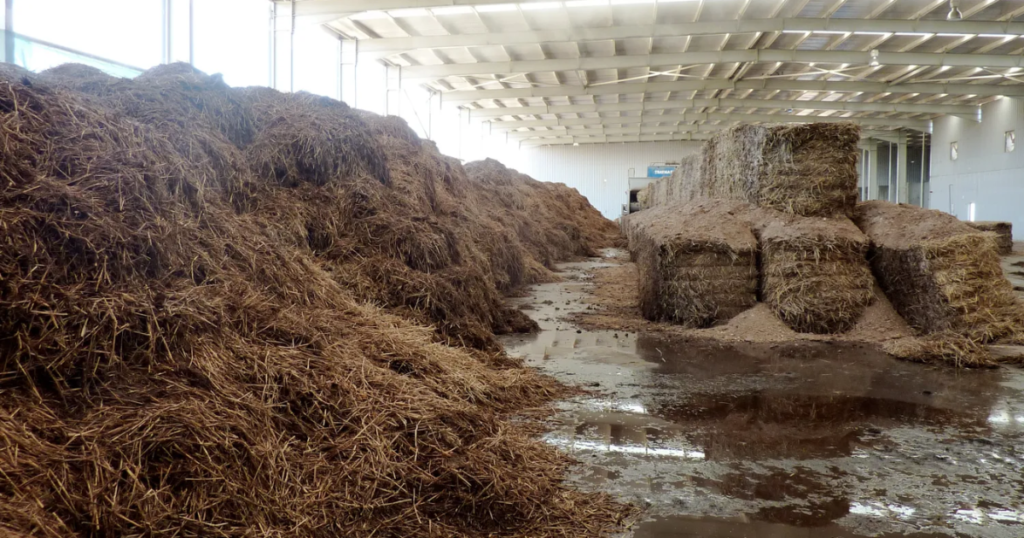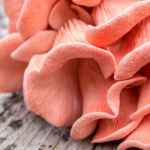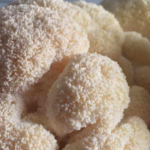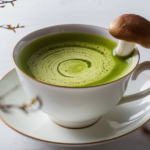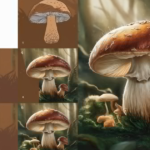Mushroom compost is gaining popularity among gardeners for its rich nutrient content and ability to improve soil health. If you’re looking to enhance your garden’s productivity, this comprehensive guide will explain everything you need to know about mushroom compost, from its benefits to application methods.
What is Mushroom Compost?
The Basics of Mushroom Compost
This is a type of organic fertilizer created from the byproducts of mushroom farming. It typically consists of materials like straw, hay, corn cobs, and poultry manure, which are all nutrient-rich. These components are combined and composted to produce a dark, fertile soil amendment.
How Mushroom Compost is Made
This production process involves several steps:
- Mixing Raw Materials: Ingredients such as straw, hay, poultry manure, and gypsum are mixed together.
- Composting: The mixture undergoes an initial composting phase for several weeks, during which microorganisms break down the organic matter.
- Pasteurization: The compost is pasteurized to eliminate weed seeds and harmful pathogens.
- Aging: The compost is then aged further to ensure it is fully decomposed and ready for garden use.
This process takes several months, resulting in a nutrient-dense compost ideal for various gardening needs.
Benefits of Mushroom Compost
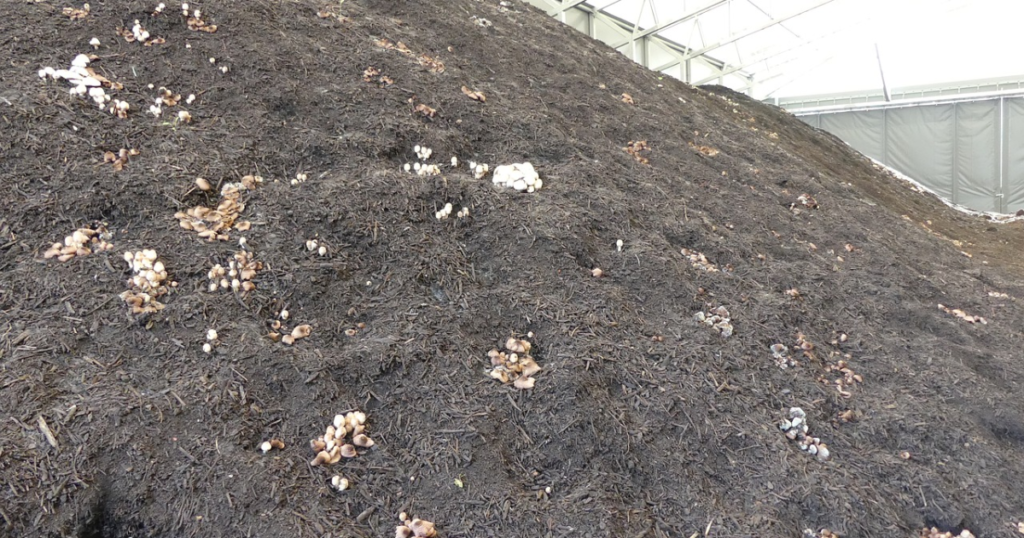
Nutrient-Rich Soil Amendment
Mushroom compost is packed with essential nutrients that plants need to thrive. It contains high levels of nitrogen, phosphorus, and potassium, which are crucial for plant growth. Unlike synthetic fertilizers, mushroom compost releases these nutrients slowly, providing a steady supply to plants over time.
Improves Soil Structure
Good soil structure is vital for healthy plant growth. Mushroom compost improves soil structure by increasing its organic matter content. This makes the soil more friable, allowing roots to penetrate easily and improving air circulation. Plants growing in well-structured soil typically have stronger root systems and better overall health.
Enhances Water Retention
Water retention is another critical factor for plant health. This may helps soil retain water more effectively, reducing the need for frequent watering and making plants more drought-resistant. This is particularly beneficial in areas with water restrictions or during dry seasons.
Promotes Beneficial Microorganisms
It supports the growth of beneficial microorganisms in the soil. These microorganisms play a crucial role in breaking down organic matter, enhancing nutrient availability, and promoting healthy root systems. A soil rich in beneficial microbes is more resilient and supports robust plant growth.
Read More:
How to Use Mushroom Compost in Your Garden
Application Methods
There are several ways to apply mushroom compost in your garden:
- Soil Amendment: Mix mushroom compost into the top few inches of your garden soil. This enriches the soil with nutrients and improves its structure.
- Mulch: Spread a layer of mushroom compost around plants as mulch. This helps retain moisture, suppress weeds, and gradually adds nutrients to the soil.
- Top Dressing: Apply a thin layer of mushroom compost to the surface of the soil around established plants. This provides a nutrient boost and improves soil health over time.
Ideal Plants for Mushroom Compost
Mushroom compost is particularly beneficial for certain types of plants, including:
- Vegetables: Tomatoes, peppers, and cucumbers thrive with the added nutrients and improved soil structure.
- Fruits: Strawberries, raspberries, and blueberries benefit from the moisture retention and nutrient content.
- Flowers: Roses, marigolds, and sunflowers show enhanced growth and blooms when grown in soil amended with mushroom compost.
However, avoid using mushroom compost with acid-loving plants like azaleas and rhododendrons, as the compost’s pH can be slightly alkaline.
Common Mistakes to Avoid
When using mushroom compost, be mindful of these common mistakes:
- Overapplication: Applying too much compost can lead to nutrient imbalances and waterlogging. Use it sparingly and mix it well with the soil.
- Using Fresh Compost: Fresh mushroom compost can be too strong and harm plants. Always use well-aged compost.
- Incorrect Placement: Avoid placing compost too close to plant stems, as this can cause rot. Spread it evenly around the root zone.
Comparing Mushroom Compost to Other Compost Types
Mushroom Compost vs. Traditional Compost
While both mushroom compost and traditional compost offer benefits, they have some differences:
| Feature | Mushroom Compost | Traditional Compost |
| Nutrient Content | High | Moderate |
| Soil pH Impact | Slightly Alkaline | Neutral |
| Ideal For | Vegetables, Fruits, Flowers | General Use |
Mushroom compost typically has a higher nutrient content due to its specific ingredients. However, traditional compost is more versatile as it does not significantly affect soil pH.
Mushroom Compost vs. Vermicompost
Vermicompost, also known as worm compost, is another excellent option for gardeners. Here’s a comparison:
| Feature | Mushroom Compost | Vermicompost |
| Nutrient Content | High | Very High |
| Ease of Use | Easy | Moderate |
| Production Time | Several Months | Several Months |
Vermicompost is rich in nutrients and beneficial microbes but can be more labor-intensive to produce. Mushroom compost is easier to source and use, making it a convenient option for many gardeners.
Where to Buy Mushroom Compost
Sourcing Mushroom Compost
Mushroom compost is widely available at garden centers, nurseries, and online retailers. When purchasing, look for well-aged compost that is dark, crumbly, and free of large chunks. Ensure it has a pleasant earthy smell, indicating it is properly decomposed.
DIY Mushroom Compost
If you prefer a hands-on approach, you can make your own mushroom compost at home. Here’s how:
- Gather Materials: You’ll need straw, poultry manure, gypsum, and water.
- Mix Ingredients: Combine the materials in a compost bin or pile.
- Turn Regularly: Turn the compost regularly to aerate and mix the ingredients.
- Compost for Several Months: Allow the compost to decompose for several months, turning it occasionally to ensure even decomposition.
Making your own compost gives you control over the ingredients and the satisfaction of creating a valuable soil amendment for your garden.
FAQs
What is mushroom compost made from?
Mushroom compost is created from organic materials like straw, hay, corn cobs, poultry manure, and gypsum. These ingredients are composted and pasteurized to produce a nutrient-rich soil amendment.
Can I use mushroom compost for all plants?
Mushroom compost is great for vegetables, fruits, and flowers but is not recommended for acid-loving plants like azaleas and rhododendrons due to its slightly alkaline pH.
How do I apply mushroom compost to my garden?
You can mix mushroom compost into the soil, use it as mulch around plants, or apply it as a top dressing. Ensure it’s well-aged and apply it sparingly to avoid nutrient imbalances.
Is mushroom compost better than traditional compost?
Mushroom compost has higher nutrient content and improves soil structure effectively. However, traditional compost is more versatile and doesn’t alter soil pH, making it suitable for a wider range of plants.
Where can I buy mushroom compost?
Mushroom compost is available at garden centers, nurseries, and online retailers. Look for well-aged compost that is dark, crumbly, and has a pleasant earthy smell.
Conclusion
Mushroom compost is a valuable addition to any garden. Its rich nutrient content, ability to improve soil structure, and enhancement of water retention make it an excellent choice for gardeners looking to boost plant health and productivity. Whether you buy it or make your own, incorporating mushroom compost into your gardening routine can lead to healthier, more vibrant plants. Give it a try and see the difference it can make in your garden.

